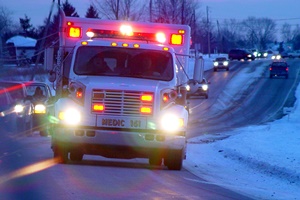What Parents Need to Know About E-Cigarettes

With the possible exception of vaccinations, there are few more polarizing health issues confronting the general public right now than the use of electronic cigarettes.
At the heart of the public health issue are two very simple facts. First, e-cigarettes are relatively new. And second, their use has grown far faster than our understanding of how they affect the health of “vapers” and those around them.
The resulting uncertainty means that reasonable people have very different opinions about the risks—and opportunities—electronic cigarettes might present for public health. For the sake of discussion, we’ll summarize the positions taken by three different groups based on their starting premise and priorities.
Group 1: “Nicotine addiction is bad, and e-cigarettes are just another way to deliver nicotine. So why encourage it?”
Group 2: “E-cigarettes are certainly safer than traditional cigarettes and may help smokers quit. So why not back an alternative to tobacco?”
Group 3: “We don’t know what the health effects of e-cigarettes actually are, but we’d rather be safe than sorry. So why not regulate them tightly until we know more?”
First, some facts about traditional cigarettes.
Just to remind parents of the danger that smoking tobacco cigarettes poses to health, here are some excerpts from a January, 2013 study published in the prestigious New England Journal of Medicine, based on a U.S. National Health survey of 202,248 Americans:
- “For participants who were 25 to 79 years of age, the rate of death from any cause among current smokers was about three times that among those who had never smoked.”
- “The probability of surviving from 25 to 79 years of age was about twice as great in those who had never smoked as in current smokers.”
- “Life expectancy was shortened by more than 10 years among the current smokers, as compared with those who had never smoked.”
- “Cessation before the age of 40 years reduces the risk of death associated with continued smoking by about 90%.”
These figures support previous research that indicates that few things in modern life are as harmful to health as smoking tobacco cigarettes.
Second, some facts about electronic cigarettes.
- E-cigarettes are not tobacco products and don’t produce smoke. Instead, they heat liquids to produce a vapor. This is why smoking e-cigarettes is sometimes referred to as “vaping.”
- E-cigarettes may or may not contain nicotine, though many or most do. Unlike traditional cigarettes, they come in a wide variety of flavors.
- The liquids used in e-cigarettes can vary a great deal in terms of both ingredients and consistency. There have been concerns that some liquids may contain harmful chemicals, either as a result of the “recipe” used in manufacturing or because of problems in quality control.
- Some tobacco smokers have reported that e-cigarettes have helped them quit.
So what about e-cigarettes and your teenager?
The use of e-cigarettes among middle and high school students exploded between 2013 and 2014. In 2013, 4.5% of high school students reported vaping at least once in the prior 30 days. In 2014, 13.4% did. Comparable statistics for middle school students were 1.1% in 2013 and 3.9% in 2014. According to the 2014 National Youth Tobacco Survey, e-cigarette use has now surpassed current use of every other tobacco product overall, including traditional cigarettes. This means that if you have a child who is between the ages of 13 and 18, it is very likely that they know someone who vapes.
Some of the worry among public health officials and regulators stems from the idea that e-cigarettes may act as a “gateway drug” to real cigarettes or to something worse. They are also worried that traditional cigarette companies could accelerate the current trend by directing their marketing expertise at young people. The overarching concern is that this segment is both particularly attractive and particularly vulnerable.
Over the past few years, researchers have gained a better understanding of how the adolescent brain develops and how it responds to certain substances. One of the things they’ve learned is that teens’ ability to weigh risks and longer-term consequences is still forming. They have also discovered that even casual drug use can cause structural changes in a teenager’s rapidly developing brain that reduce cognitive ability in measurable ways. Of course, this is a nightmare scenario for most parents, who would prefer that their children not abuse any substance with the potential to cause harm or dependency.
Other parents, however, see e-cigarettes as simply the lesser of two evils. If they start with the presumption that their son or daughter is going to try a cigarette anyway, they would rather it be an e-cig than traditional tobacco, with its 79 carcinogens and all the negative second- and third-hand health effects.
As healthcare professionals, we encourage parents to help their children build good lifestyle habits that will serve them well as adults. While we recognize that parents have less and less direct control over teens’ choices as they grow and become more independent, we believe that it is very important to point them in the right direction and set a good example. Given that we don’t know everything we need to know about the health risks of e-cigarettes, parents should be very cautious about letting teenagers pick up this type of habit.


 America’s roads have become far safer across the past three decades. By just about any measure, travelers are much less likely to be injured or killed in a motor vehicle accident than they were in the late 1980s and early 1990s. And this is true even though we’re driving more miles each year!
America’s roads have become far safer across the past three decades. By just about any measure, travelers are much less likely to be injured or killed in a motor vehicle accident than they were in the late 1980s and early 1990s. And this is true even though we’re driving more miles each year!



 Headaches are one of the most common types of pain that people experience on a regular basis. Researchers estimate that nine out of ten Americans suffer from headache pain at some point. 95% of women and 90% of men have had at least one in the past 12 months. And for about 45 million of us, those headaches are chronic.
Headaches are one of the most common types of pain that people experience on a regular basis. Researchers estimate that nine out of ten Americans suffer from headache pain at some point. 95% of women and 90% of men have had at least one in the past 12 months. And for about 45 million of us, those headaches are chronic.